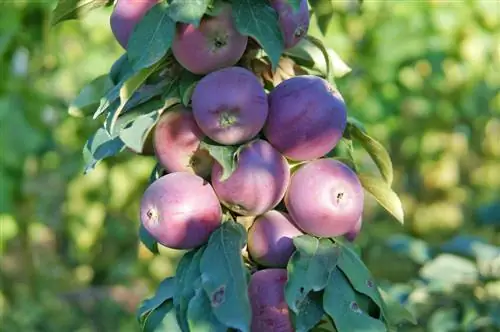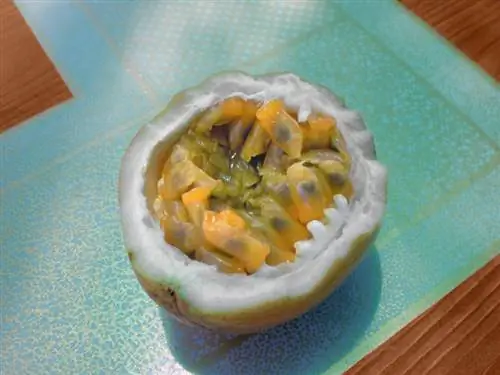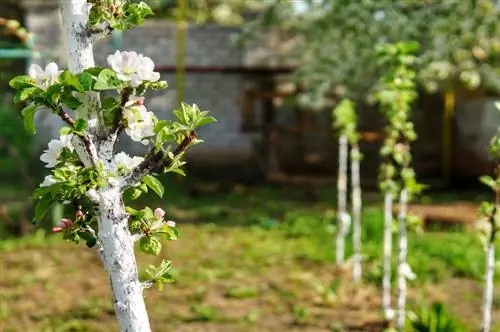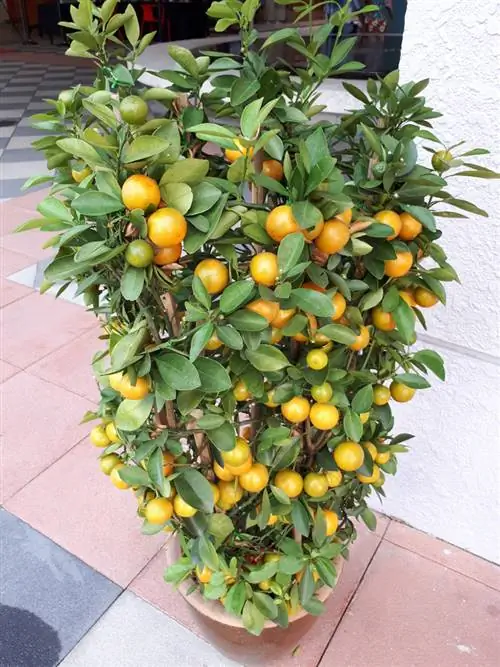- Author admin [email protected].
- Public 2023-12-16 16:46.
- Last modified 2025-01-23 11:21.
Many people would love to grow their own fruit and harvest it fresh from the tree, but they don't have the necessary garden space. With specially bred columnar fruit, the dream of having your own orchard can now also be realized as a pot culture on the balcony or terrace.

How can you successfully grow columnar fruit in a pot?
Pillar fruit in pots is possible if you choose the right variety, use a sufficiently large pot (at least 30-40 liters), ensure good drainage and fertilize the plant regularly. Ideally, the location should be sunny and protected from wind.
Take the needs of fruit trees into consideration
If columnar fruit trees are to be grown in containers, then the most important questions about the following factors should be clarified before planting:
- Location
- Pot size
- suitable varieties
- Measures against waterlogging
While all columnar fruit varieties are characterized by a generally narrow and upright growth, not all of them can be kept small as “fruit bonsai” for the balcony. When purchasing, be sure to find out very carefully about the respective growth and refinement form. When growing fruit in a pot, if possible, do not choose a plant size of less than 30 or 40 liters (€55.00 on Amazon), otherwise you may have to transplant the trees more often than just every five years. You will also only be able to harvest really well-ripened fruit in sufficiently sunny locations.
Without fertilization there is no long-term yield
When planting columnar fruit in a pot, you should first make sure there are sufficiently large drainage holes in the lower area. These are protected from becoming clogged with earth using pottery shards or stones. At the same time, the base of the fruit tree in the pot is weighted down, making it more resistant to tipping over. When planting, use a mixture of garden soil, sand and mature compost. This ensures a long-term supply of important nutrients. In addition, consistent fertilization is still necessary so that the respective fruit tree can deliver the desired yield. After all, certain amounts of cutting material are usually disposed of every year, for which the tree has to absorb appropriate amounts of nutrients through its roots.
Tip
Pillar fruit is generally hardy and should not be overwintered indoors. However, in the winter season, avoid locations with a lot of sunlight and associated temperature differences. These can cause problems for the plants and cause the bark to crack. If straw or leaves are used as a winter protective layer for the columnar fruit in the bucket, then in spring care must always be taken to ensure that the grafting area is exposed to the air again. If this is permanently covered with substrate, rot can occur at this point.






